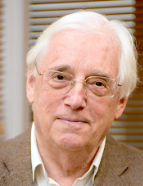Mitochondrial ATP synthase: cellular power generator, determinant of mitochondrial cristae formation, a site linked to human diseases
Energy from the sun is entrapped by photosynthesis and stored in high energy compounds that we consume in food. The energy is released by controlled burning in the mitochondria inside the cells of our bodies, and is used to generate a proton motive force (made largely of a voltage) across the inner mitochondrial membrane. The ATP synthase, a complex enzyme made of 28 proteins, uses this proton motive force to generate adenosine triphosphate, ATP, the fuel of biology, inside the mitochondria. Over more than 40 years, we have built up a molecular structure of the ATP synthase from mitochondria, leading to the realisation in 1994 that they are molecular turbines that rotate like man-made turbines to churn out ATP in massive quantities. In this way, each of us makes about 60 kg of ATP daily to sustain our lives. Our description in 2021 of the complete atomic structure of the dimeric mitochondrial ATP synthase provided the crucial evidence that had been lacking hitherto that the turning of the enzyme's rotor is generated by the direct application of the proton motive force to the enzyme's rotor via a Grotthus chain of water molecules.
One of our current interests isworking out how the ATP synthase machine is assembled from its 28 constituent proteins within human mitochondria. Two of them are encoded in the mitochondrial genome, and the others are nuclear gene products that are imported into the organelle. Another is how the activity of the enzyme is regulated by the inhibitory protein IF1 and how the inhibitory activity of IF1 itself is regulated.
Biography
John Walker was born in Halifax, Yorkshire and attended Rastrick Grammar School from 1953-1960, where he was awarded the A T Clay Gold Medal for academic distinction. He studied chemistry at St Catherine’s College Oxford (1961-65), and in 1969 was awarded the D Phil degree for studies of antibiotics at the Sir William Dunn School of Pathology in Oxford. During periods of research at the University of Wisconsin USA, and The Pasteur Institute in Paris he developed his expertise in the analysis of proteins, and in 1974, he joined The Medical Research Council (MRC) Laboratory of Molecular Biology in Cambridge. Here, he cultivated his enduring interest in the mitochondria. In 1978, whilst studying the features of DNA molecules found in the mitochondria, he became interested in the question of how energy in food is transferred into ATP. In 1997, he was awarded the Nobel Prize in Chemistry for providing evidence of the rotary mechanism of the ATP synthase.
In 1997, John was appointed as Director of the MRC Dunn Human Nutrition Unit, which became the MRC Mitochondrial Biology Unit in 2009, and since 2013, he has been the Director Emeritus. John uses his knowledge about energy conversion for medical benefit, in 2021 establishing the structure of the mycobacterial ATP synthase as a target for developing new drugs against tuberculosis. Another of his activities is to act as Chair of the Scientific Supervisory Board of the Citrin Foundation.
John was elected a Fellow of the Royal Society in 1995, and in 2012, he was awarded its Copley Medal, the UK's highest scientific accolade. He was knighted for services to Science in 1999. Among numerous awards he has received the Biochemical Society’s CIBA Prize and Medal (1996) and its Keilin Medal (2011), and the Peter Mitchell Medal of the European Bioenergetics Congress (1996). He is a Founding Fellow of the Academy of Medical Sciences, a Fellow of Sidney Sussex College, Cambridge, an Honorary Fellow of St Catherine’s College, Oxford, a Foreign Member of L’Accademia Nazionale dei Lincei, of the Royal Netherlands Academy of Arts and Sciences, and of The Royal Society of New Zealand, and a Foreign Associate of the US National Academy of Sciences. He has been awarded numerous honorary degrees from Universities around the world, including the Honorary Degree of Doctor of Science honoris causa from the University of Oxford in 2001 and from the University of Cambridge in 2021.
Publications
Selected Publications
Carroll J, He J, Ding S, Fearnley IM & Walker JE (2019)
Persistence of the permeability transition pore in human mitochondria devoid of an assembled ATP synthase.
Proc Natl Acad Sci U S A, 116, 12816-12821
Boreikaite V, Wicky BIM, Watt IN, Clarke J & Walker JE (2019)
Extrinsic conditions influence the self-association and structure of IF1, the regulatory protein of mitochondrial ATP synthase.
Proc Natl Acad Sci U S A 116, 10354-10359
Spikes TE, Montgomery MG & Walker JE (2020)
Structure of dimeric ATP synthase from bovine mitochondria.
Proc Natl Acad Sci U S A 117, 23519-23526
Spikes TE, Montgomery MG & Walker JE (2021)
Interface mobility between monomers in dimeric bovine ATP synthase participates in the ultrastructure of inner mitochondrial membranes.
Proc Natl Acad Sci U S A118, e2021012118
Carroll J, He J, Ding S, Fearnley IM & Walker JE (2021)
TMEM70 and TMEM242 help to assemble the rotor ring of human ATP synthase and interact with assembly factors for complex I.
Proc Natl Acad Sci U S A 118, e2100558118
Publication Profile - Google Scholar


